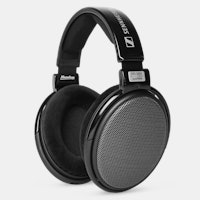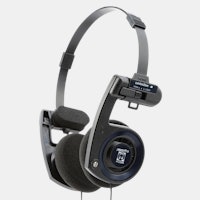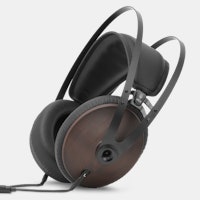Click to view our Accessibility Statement or contact us with accessibility-related questions










Get More Out of Your Turntable With VTA
Today, we want to take some time to cover one of the major Drop-exclusive improvements on our Audio Technica turntable—so important that we included it in the product name. That feature is known as Vertical Tracking Angle, or “VTA” for short.
While there were many great features in the original version of the turntable (no surprise, given Audio Technica’s prowess in the industry), we felt strongly about including VTA to allow listeners to fully explore the wonderful world of cartridges. The importance of the cartridge on a turntable cannot be overstated. Since it’s the part which actually generates the electrical signal that gets amplified into the sound you hear, it has a major impact on the sound. While the Carbon VTA is designed to work out of the box with the pre-installed cartridge, we also wanted it to be usable with a broad range of cartridges. Enter VTA.
VTA allows the tonearm height to be adjusted to compensate for differences in the height between different cartridges. Generally, you want the headshell and tonearm to be parallel with the surface of the record while it's playing. VTA becomes more important when using a cartridge that has one of the more precise Mircoline or Shibata needle profiles. These finely cut stylus profiles can offer a higher resolution of playback and sit deeper in the groove of the vinyl, but require a more precise setup to sound their best.
VTA also comes in handy when trying out different platter mats. Some might choose to replace the stock platter mat with one made of leather or cork. In doing so, you’ll be changing the height of the record surface and will want to recalibrate the height or the tonearm to compensate for these changes. In order to achieve VTA on our turntable, we developed an entirely new tonearm base made from solid metal. This creates a solid foundation for the tonearm to be slid up and down several millimeters to achieve the correct height. In total, the VTA allows for up to 6.88mm of vertical adjustment.
To adjust the height on our Carbon VTA, all you need to do is loosen the set screw in the arm base near the tonearm lift. Simply remove the spacer from the tonearm and set it aside. (Note: The spacer is important to reset the tonearm to the factory-calibrated height, so be sure to keep it in a safe location.) Next, gently raise or lower the tonearm by a few millimeters and tighten the set screw to lock the arm in place. Check the height by lowering the needle onto the surface of a record to see if the alignment is correct. You can easily make additional adjustments until you achieve the correct height. It’s that simple!



search
close
Sort by: Newest
keyboard_arrow_downjerlad
79
Dec 12, 2020
So, how do you know if the VTA needs to be adjusted? With the aforementioned stylus cuts, the stylus is able to sit lower in the groove and is influenced by undulations in the groove that would not affect a larger stylus. When deeper in the groove, the stylus will be moved a lot more than it would if it was nearer to the surface. The stylus is going to move left-and-right and up-and-down. The initial idea that the top surface of the headshell should be parallel to the disk's surface is a good one, but it doesn't guarantee that the angle of the stylus relative the disk surface is exactly where it should be. So, you would need to adjust the VTA initially to ensure that the headshell is parallel to the surface and then fine tune it from there. It's been suggested that initial angle of the stylus center is 92 degrees from the surface, towards the tonearm mount, for this is the angle of the cutting stylus when the lacquer was made.
But what are we looking for?
- The stereo sound stage should snap into focus
- The bass should transform from an undefined boom to a more precise location
- Higher frequency harshness should be replaced by sweetness, where the instruments may sing more than shrill.

MKINGUK
6
Aug 27, 2020
Hey! why the hidden comments!?
VTA has always been a nuisance but a necessary one when using line-contact stylus profiles such as Shibata. If using extended frequency response cartridges and/or 4-channel 'quadrophonic' rigs it is vital to get it right...
Is this a product project?
The UK Rega single hole fitting had a number of aftermarket devices which allowed varying degrees of movement and integrity....
Massdroppedagain
18
Mar 31, 2020
patrickmoranI think you have identified the flaw when using expensive extremely fine stylus the TT is sensitive to vta. So here's the problem vta should, be set/measured with the vinyl playing and the absolute best way to tweak it is by ear. You cannot do that with this setup. The best scenario with this type of VTA adjustment is to have multiple shims for different vinyl weighrs/thicknesses and good luck figuring out the exact thickness of the shims. Whereas the adjustable system your referring to is an on the fly adjuster.

Fearlessleader
403
Feb 25, 2020
Since "The spacer is important to reset the tonearm to the factory-calibrated height" then there should be a place within the unit to store / secure the spacer.
Iluvtoonz
24
Mar 3, 2020
Fearlessleaderthe spacer is in a tiny plastic zip bag taped to the underside of my unit’s base. Done.
PRODUCTS YOU MAY LIKE
Trending Posts in Audiophile
drPOGI
DROP BMR1 Broken?
Can anyone help me with this? Went away for dinner and came back home to my speakers making this static sound(Video Link). Its like this both in Line In and Bluetooth mode. These speakers were super super hot but I was told that it was normal for it to be this way. Sucks that literally I am just about two months out of the 1 year warranty :/ If anyone can help me that'd be great.
Dec 3, 2024
Thecricbet9
Experience Real Thrills with Cricbet99 Live Cricket Bets
Cricket, often called the "gentleman's game," has evolved into one of the most exciting sports globally, captivating millions of fans. With the rise of online sports betting, fans now have the opportunity to elevate their passion for cricket to new heights. Cricbet99 offers a thrilling and immersive live cricket betting experience, making it the ultimate platform for sports enthusiasts who want to combine their love for cricket with the excitement of live wagering. At Cricbet99, the thrill of cricket betting goes beyond just placing a bet; it’s about feeling the adrenaline rush as the game unfolds in real-time. Whether you’re a seasoned bettor or a newcomer, Cricbet99 provides a user-friendly interface designed to cater to all levels of experience. The platform’s live betting feature allows you to place wagers as the action happens on the field, bringing you closer to the game than ever before. Every ball bowled, every run scored, and every wicket taken creates a new opportunity to...
Nov 28, 2024

UlaUla
How to customize a Samsung ringtone for each contact
Personalizing your phone with Samsung ringtones for each contact is a great way to make your mobile experience more enjoyable and functional. Whether it's to distinguish an important call from a banal call or to give a personal touch to each interaction, customizing Samsung ringtones allows you to organize and better manage your calls. In this article, we will explain how to easily customize a ringtone for each contact on your Android and iPhone phone, using Samsung ringtones. Download the list of free phone ringtones samsung from the website: https://sonnerie.tel/samsung/ Why customize Samsung ringtones for each contact? 1. Save time and productivity Knowing immediately who is calling you thanks to a specific ringtone for each contact allows you to react more quickly. This is particularly useful in a professional setting or to efficiently manage your schedule. 2. Improve personal organization Assigning specific ringtones to groups of contacts (friends, family, colleagues)...
Nov 27, 2024
discoverymart
What is a headphone in a computer?
A headphone in a computer is an audio device used for private sound output, often with a built-in microphone for communication. It connects via wired or wireless methods and is commonly used for listening to audio, gaming, or online calls. https://discoverymart.net/
Nov 26, 2024

Goach
I had a good experience with Drop. Thank you Drop.
Impressive warranty service. Real quick. I needed to return my 6xx for a buzzing in the right speaker. I inquired with the manufacturer regarding the two year warranty and was batted around a couple of times before being directed back to Drop. Drop then covered the warranty even though it was a couple of days past the purchase date of the warranty’s terms. I’m not stating you will have the same results. I initiated the claim prior to expiration. I was issued an rma, I returned my unit and had a new unit two weeks later. Thank you Drop. Another happy customer. I’m not a bot. Send me any puzzle and I’ll complete it.
Nov 24, 2024













